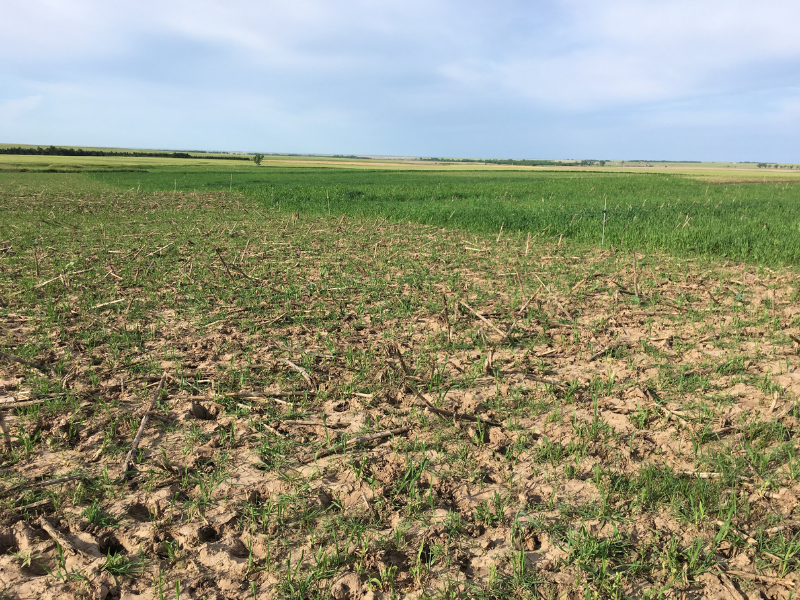News Bits
By Tyne Morgan, AgWeb.com
Wheat futures were fueled by the ongoing Russia-Ukraine crisis on Wednesday. As a result, front-month wheat contracts hit daily trading limits and soared to a 14-year high at $10.59
"May and July, both Hard Red Winter (HRW) and Soft Red Winter (SRF) contracts, are limit up at the moment at 75 cents, so expanded trading limits today because we closed 50 cents higher yesterday," Brian Grete told Davis Michaelsen on AgriTalk Wednesday. "It's more fallout from the the Russia-Ukraine impacts to global grain trade, and that's really what's driving this morning to new contract highs."
Grete says spring wheat futures hadn't hit limit up yet, as those contracts were more of a follower.
So, why are wheat prices seeing such momentum? Both Ukraine and Russia account for nearly 30% of the world's wheat exports. It's not just uncertainty about the crisis causing wheat prices to climb, but there's also worries about infrastructure damage in Ukraine and whether it will hinder the country's ability to export in the near future.
by Patrick Douglas, Wall Street Journal
U.S. agriculture companies operating in Ukraine are closing offices and shuttering facilities there in response to Russia's attack.
Archer Daniels Midland Co. said Thursday that it had stopped operating its facilities in Ukraine, where, a company spokeswoman said, the crop trader and processor employs more than 630 people. ADM's Ukraine facilities include an oilseed crushing plant in Chornomorsk, a grain terminal in the port of Odessa, six grain silos and a trading office in Kyiv.
Agriculture giant Bunge Ltd. closed company offices as well as temporarily suspended operations at processing facilities in two cities in Ukraine, the company said Thursday. Bunge employs more than a thousand workers in Ukraine who operate two processing facilities as well as grain elevators and a grain export terminal in various parts of the country.
CHS Inc., a farm cooperative and major grain shipper and retailer of seeds and chemicals, said it has been drawing down its export activity in Ukraine for the past few weeks. It employs 46 people in the region but doesn't own port operations in the country.
Chinese researchers have successfully cultivated fragrant sorghum using CRISPR/Cas9 gene-editing technology.
Aroma is an important quality in food. Jasmine rice, for instance, is popular with consumers for its aroma and, and it fetches a higher price accordingly.
Previous studies have found that a volatile aroma compound named 2-AP contributes to the fragrance of rice. A gene called BADH2 can regulate the accumulation of 2-AP, generating odor in crops.
Researchers from the Institute of Genetics and Developmental Biology of the Chinese Academy of Sciences used CRISPR/Cas9 gene-editing technology to knock out the SbBADH2 gene in sorghum, the BADH2 variant regulating the sorghum aroma.
According to the study published in the Journal of Integrative Plant Biology, the seeds and leaves of gene-edited sorghum have a significantly higher accumulation of 2-AP and smell floral and sweet.
 Comparing grazed and non-grazed portions of a cover crop field in Alexander, KS. This study focused on semi-arid environments like the Great Plains in the United States. Credit: Augustine Obour.
Comparing grazed and non-grazed portions of a cover crop field in Alexander, KS. This study focused on semi-arid environments like the Great Plains in the United States. Credit: Augustine Obour. Comparing grazed and non-grazed portions of a cover crop field in Alexander, KS. This study focused on semi-arid environments like the Great Plains in the United States. Credit: Augustine Obour.
Comparing grazed and non-grazed portions of a cover crop field in Alexander, KS. This study focused on semi-arid environments like the Great Plains in the United States. Credit: Augustine Obour.